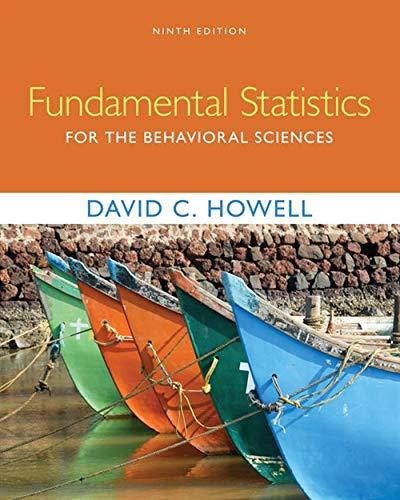Question
JD Angrist and WN Evans (1998, Children and their parents labor supply: Evidence from exogenous variation in family size, Quarterly Journal of Economics, 88(3), 450477)
JD Angrist and WN Evans (1998, Children and their parents labor supply: Evidence from exogenous variation in family size, Quarterly Journal of Economics, 88(3), 450477) used the sex composition of a familys first two children as an instrumental variable to estimate the causal effect of having a third child on the mothers labour supply using a random sample from US census data. In this section, you will use a subset of their data to estimate models similar to theirs. This sample, included in the file pums80.csv, consists of observations measured in the year 1980 on 254,654 married women. The variables from the data used in this section are:
morekids =1 if mom had more than 2 kids
boy1st = 1 if 1st kid was a boy
boy2nd = 1 if 2nd kid was a boy
samesex = 1 if 1st two kids same sex
agem1 = age of mom at census
agefstm = moms age when she 1st gave birth
black = 1 if mom is black
hispan = 1 if mom is hispanic
othrace = 1 if mom is othrace
incomem = labor income per week, 1979, constant $
the causal model of interest is income=beta0 + beta1morekids + X'beta + U
where X contains agem1, agefstm, black, hispan and othrace.
considering the blank table of estimation results below and answer questions a-f
 a) explain the rational for assuming that samesex is a valid instrument, and discuss if you think this rationale is plausible. Generate the dummy variables twoboys and twogirls which indicate that samesex=1 and the siblings are boys or girls, respectively. does the rationale for instrument validitiy extend to these variables?
a) explain the rational for assuming that samesex is a valid instrument, and discuss if you think this rationale is plausible. Generate the dummy variables twoboys and twogirls which indicate that samesex=1 and the siblings are boys or girls, respectively. does the rationale for instrument validitiy extend to these variables?
b) run the regression indicated in the table and fill in the first panel of the table. interpret the estimated coefficients on morekids from columns (1) and (2)
c) test for instrument relevance and fill in the corresponding cells in the table. interpret the results of the tests.
d) the number of IVs increases from column (2) to (3) and from (3) to (4). Assuming instruments used in column (3) are valid, are the instruments used in (4) valid? What is an advantage of having more instruments? Can you see evidence of this advantage in the results?
e) carry out OIR tests for the appropriate columns in the Table and fill in the results in the appropriate rows. state the null hypothesis of this test in words, give an explanation of what the test consists of, and interpret the results of the test
f) discuss the results from the tests for instrument relevance from part c) using weak instruments theory.
g) test for exogeneity of morekids using a hausman test and fill in the corresponding cells in the table. interpret the results of the test
race (excluded: dummy for white); mother's age at first birth; mother's age. race (excluded: dummy for white); mother's age at first birth; mother's ageStep by Step Solution
There are 3 Steps involved in it
Step: 1

Get Instant Access to Expert-Tailored Solutions
See step-by-step solutions with expert insights and AI powered tools for academic success
Step: 2

Step: 3

Ace Your Homework with AI
Get the answers you need in no time with our AI-driven, step-by-step assistance
Get Started


